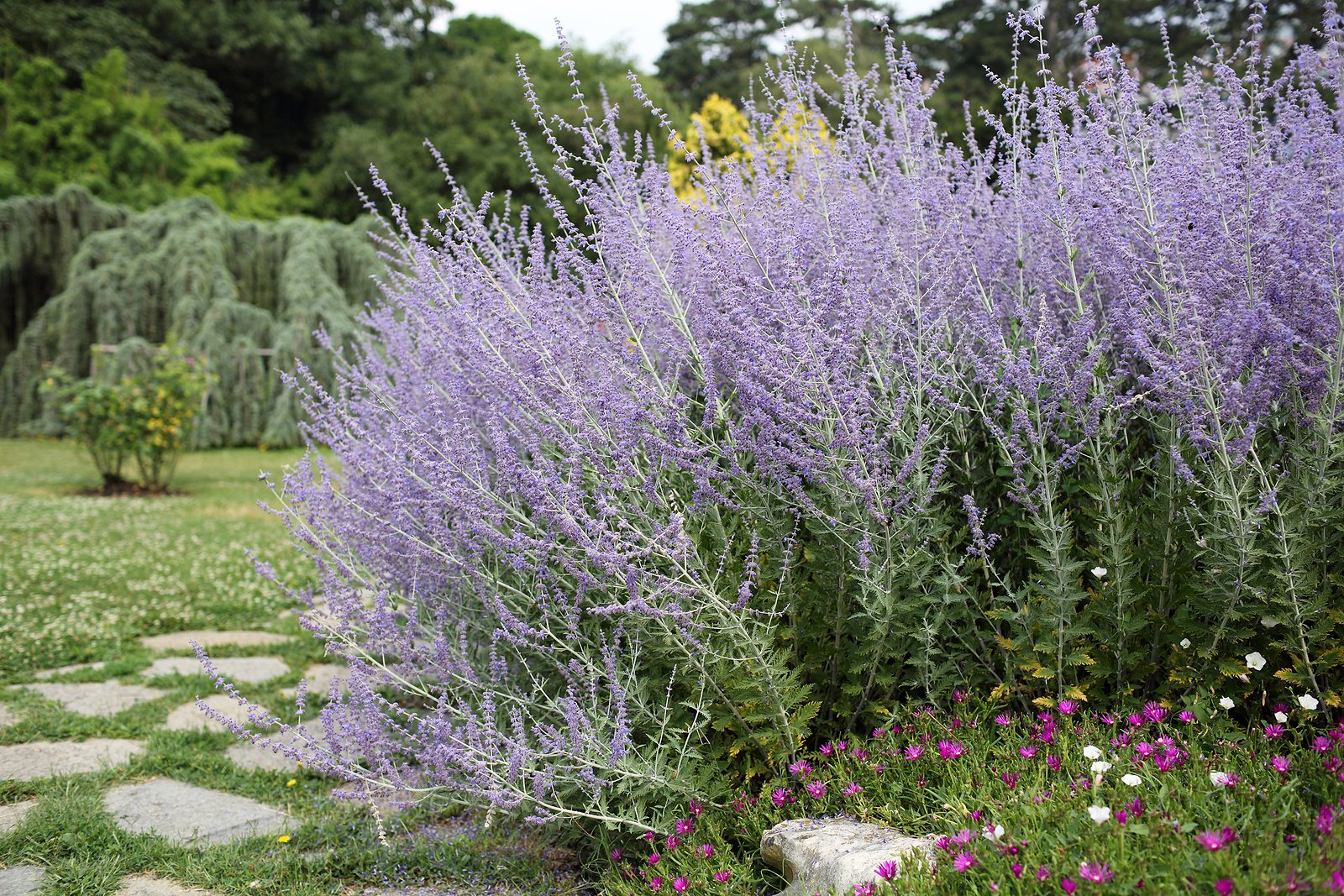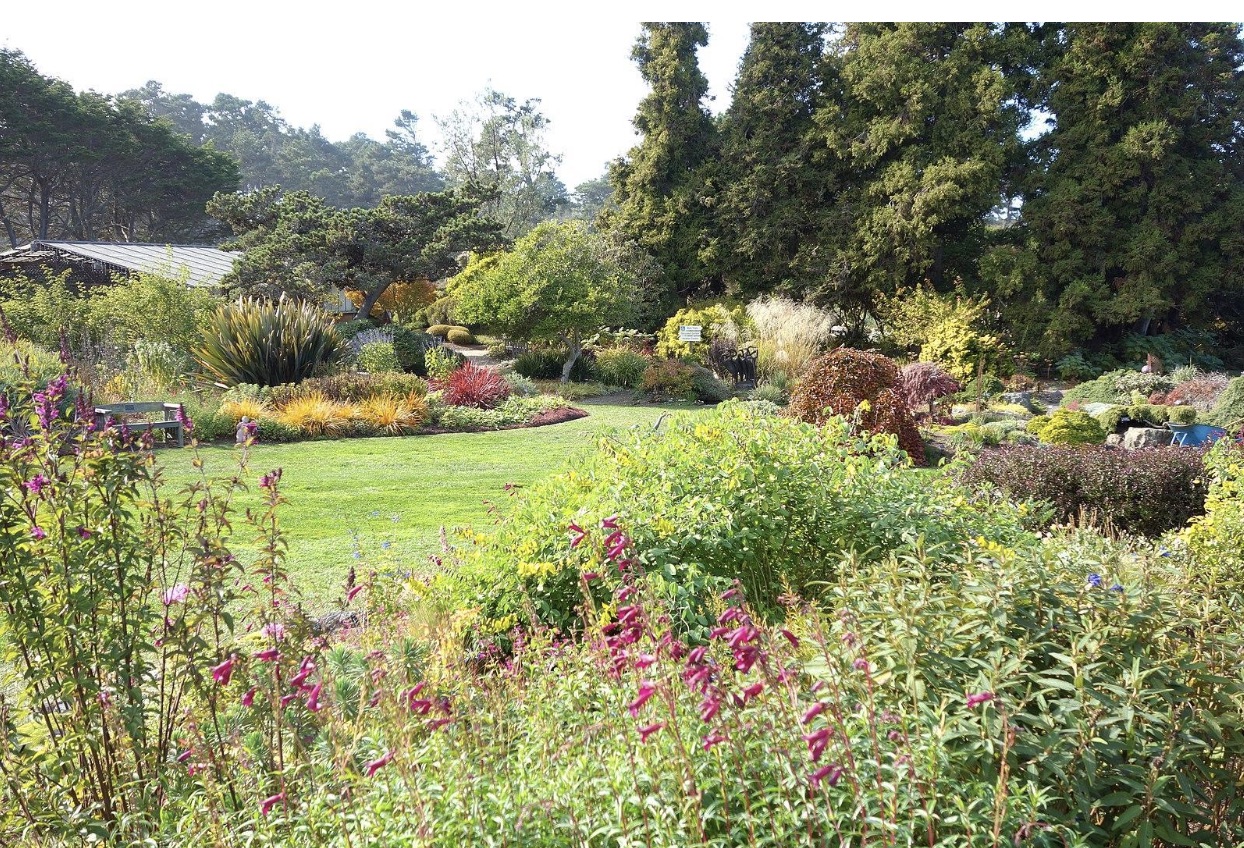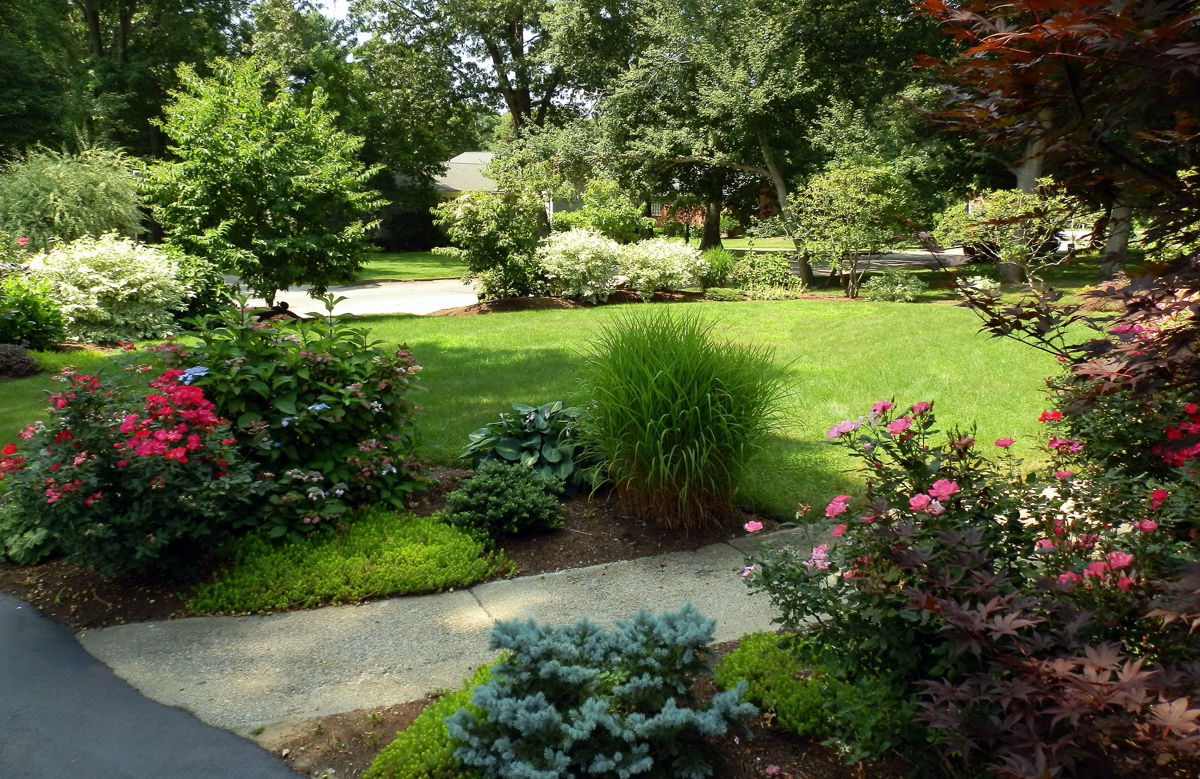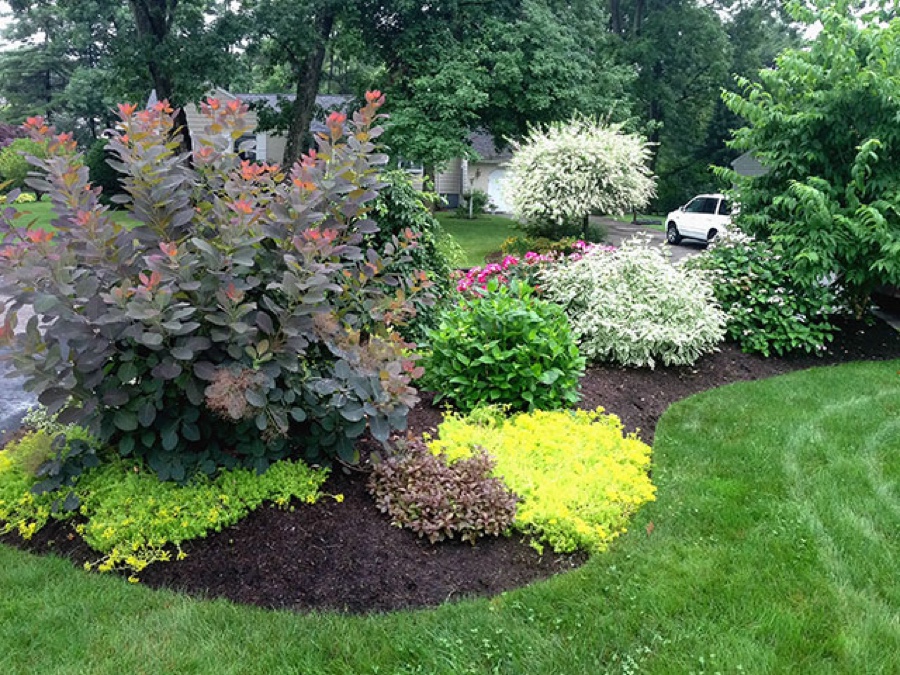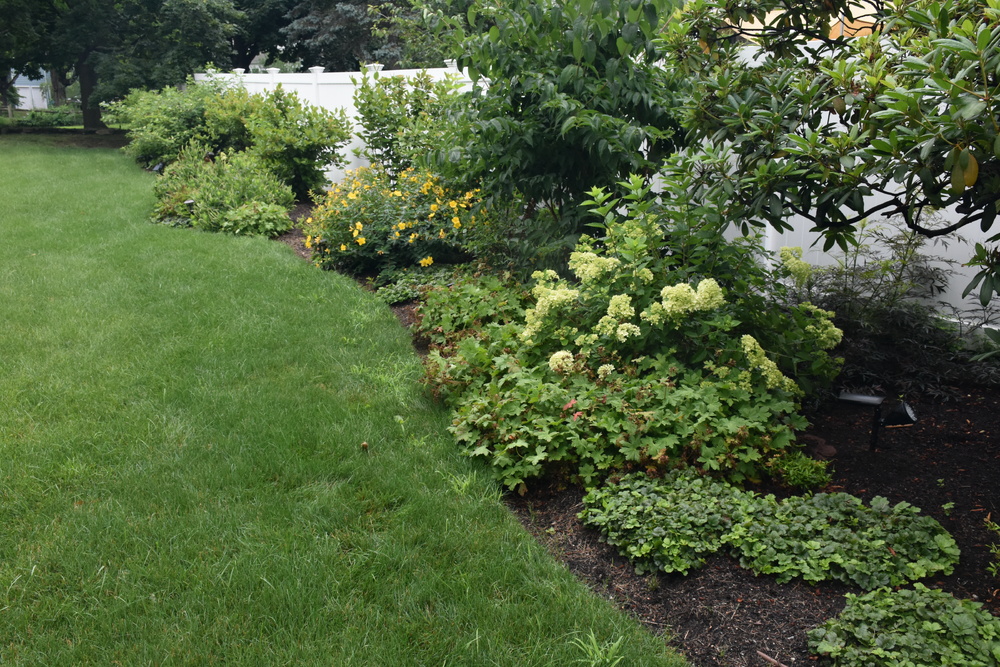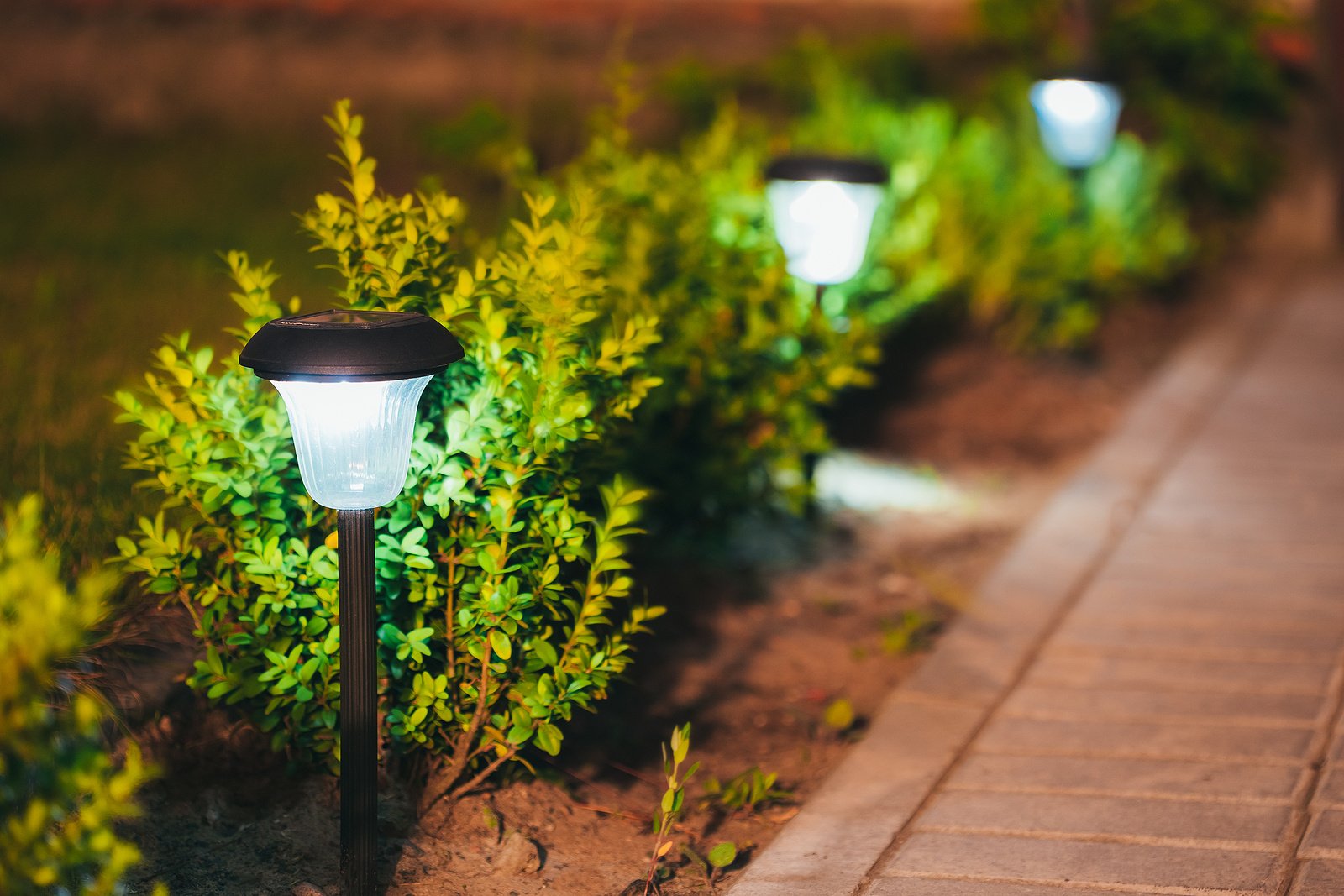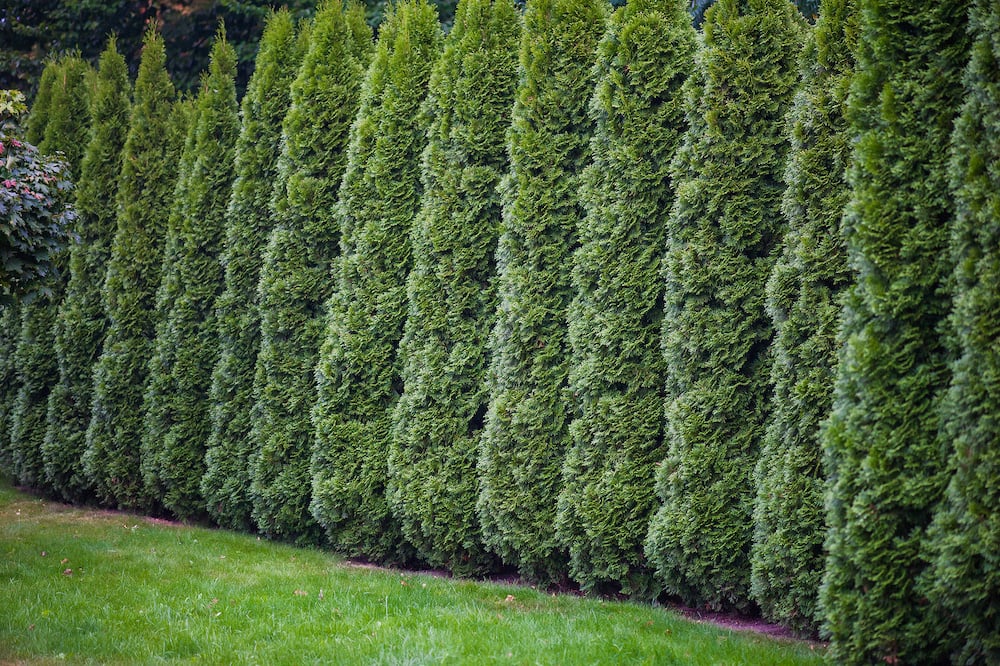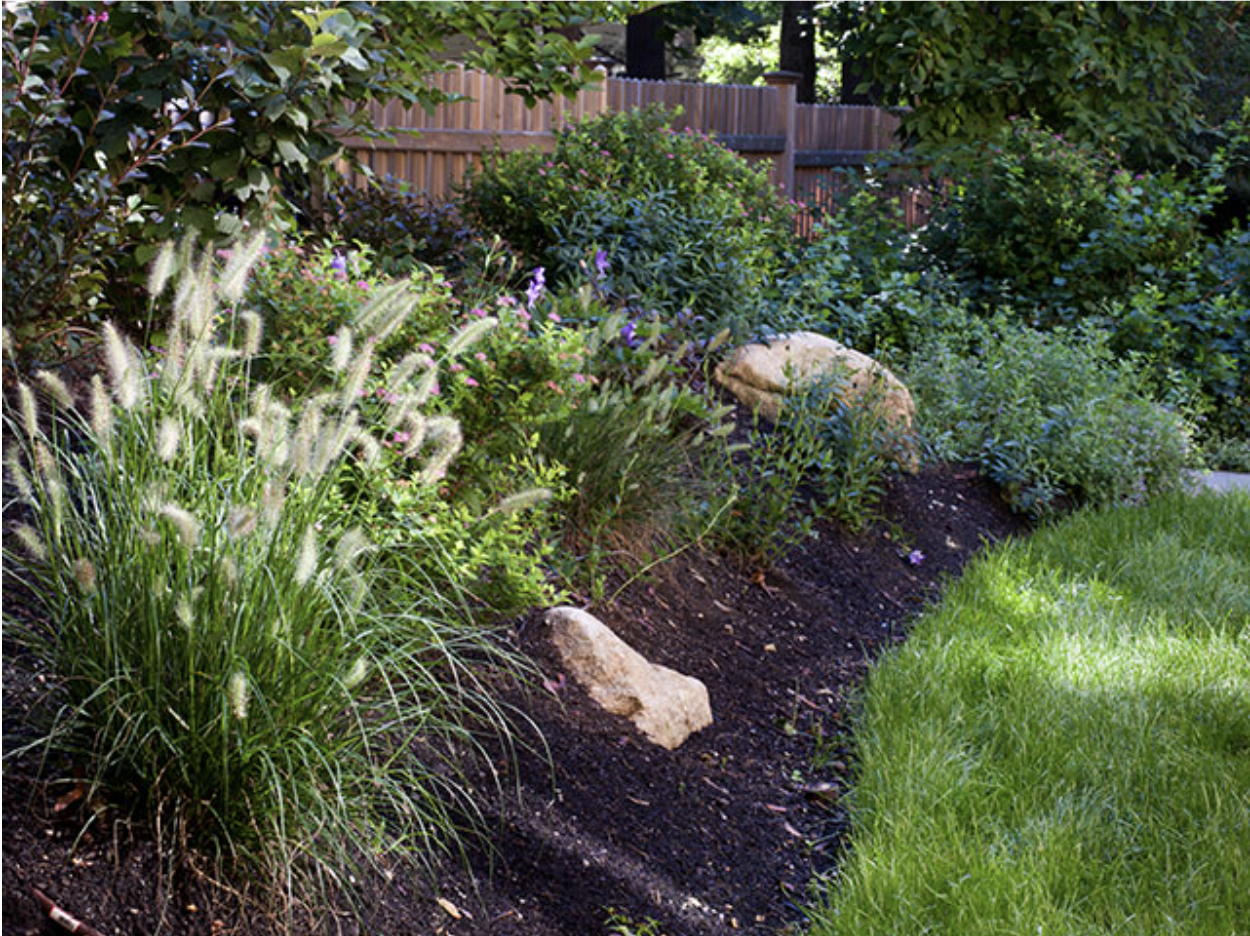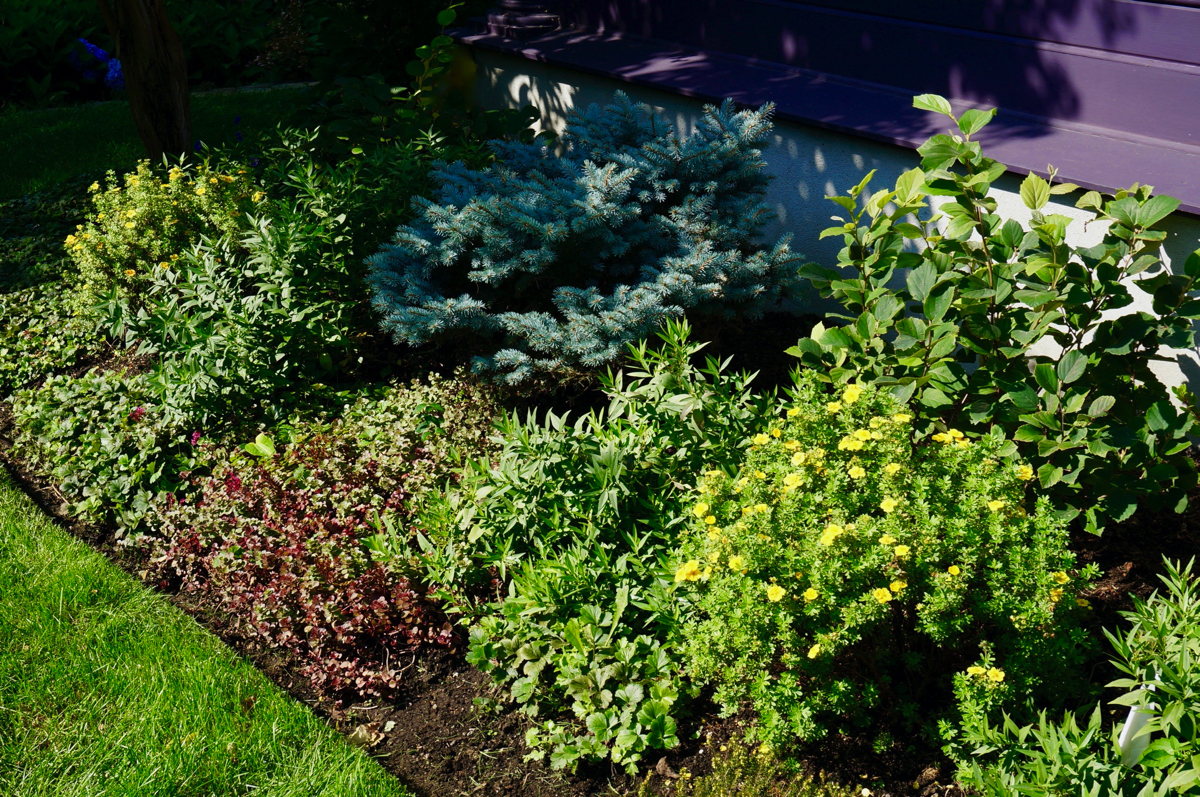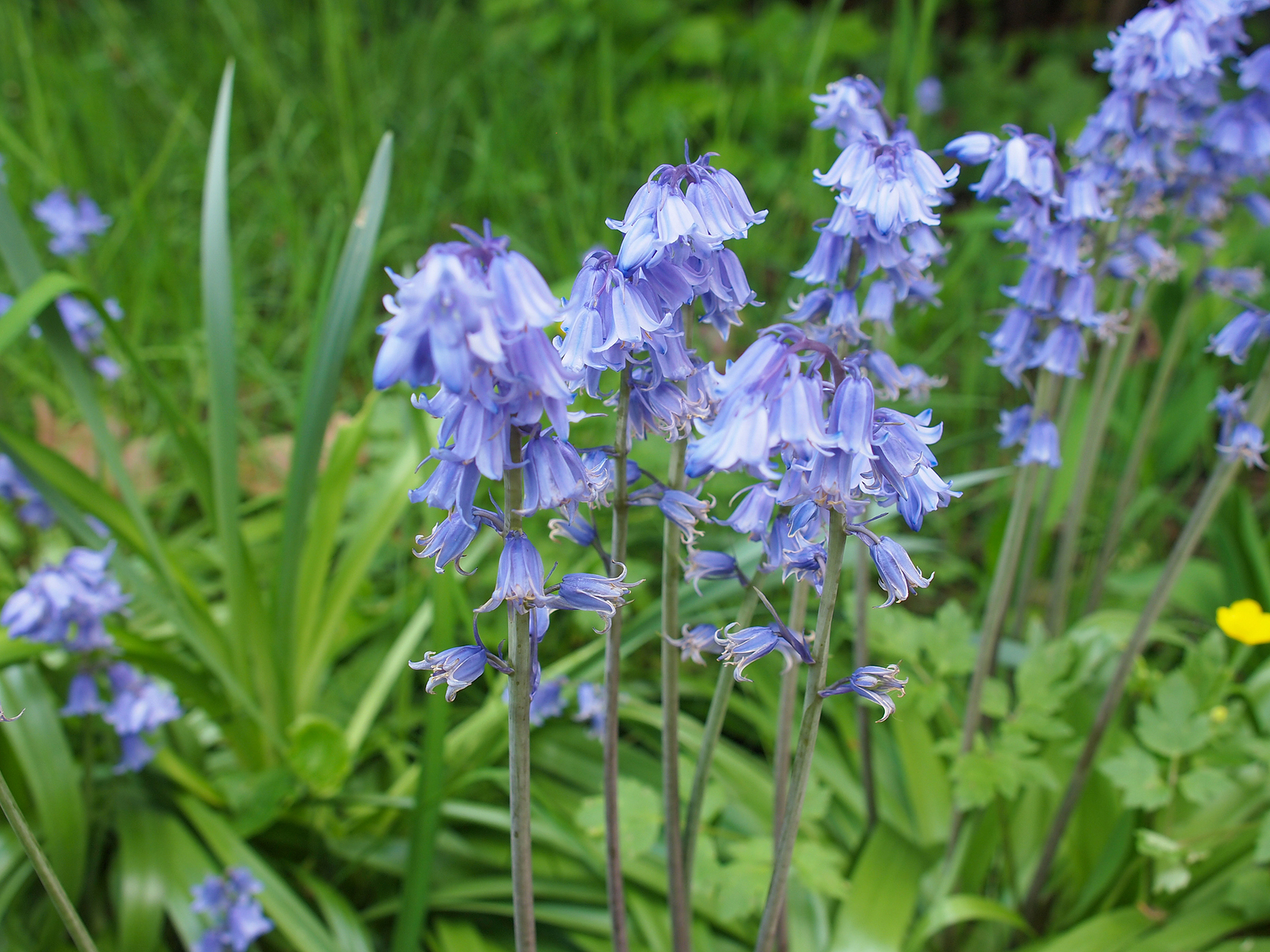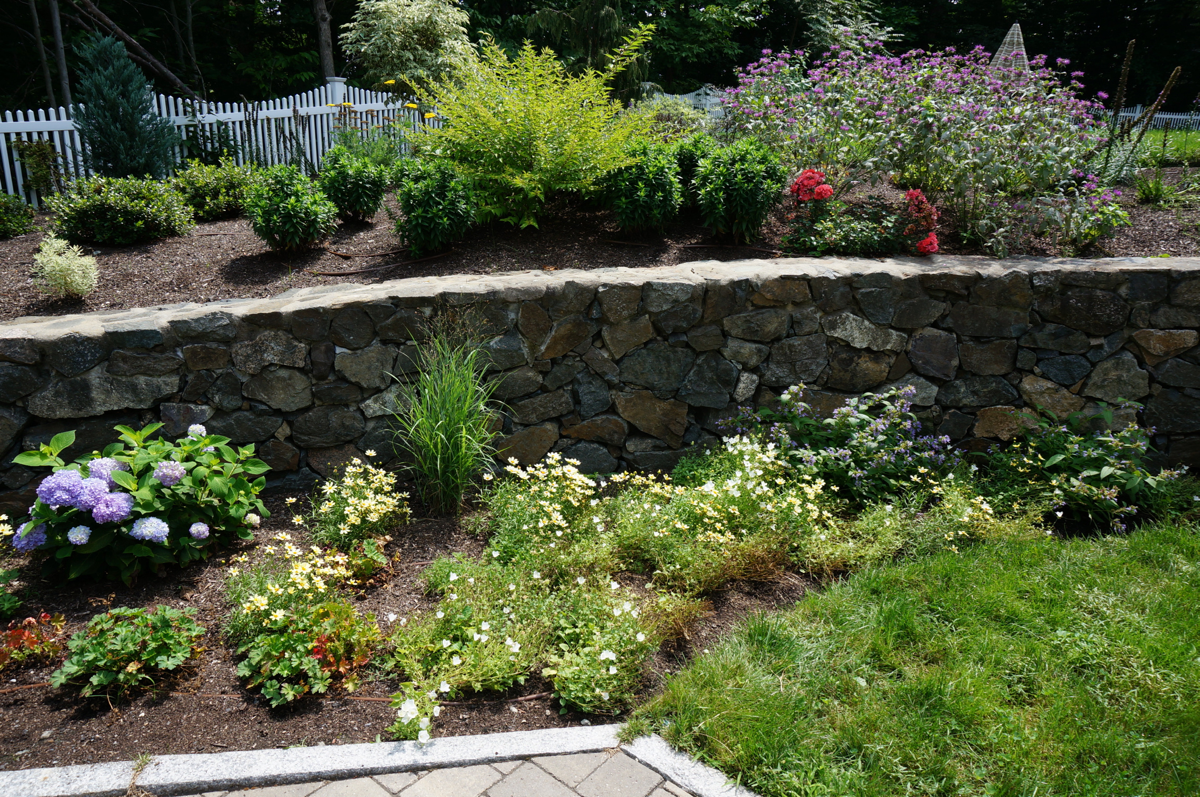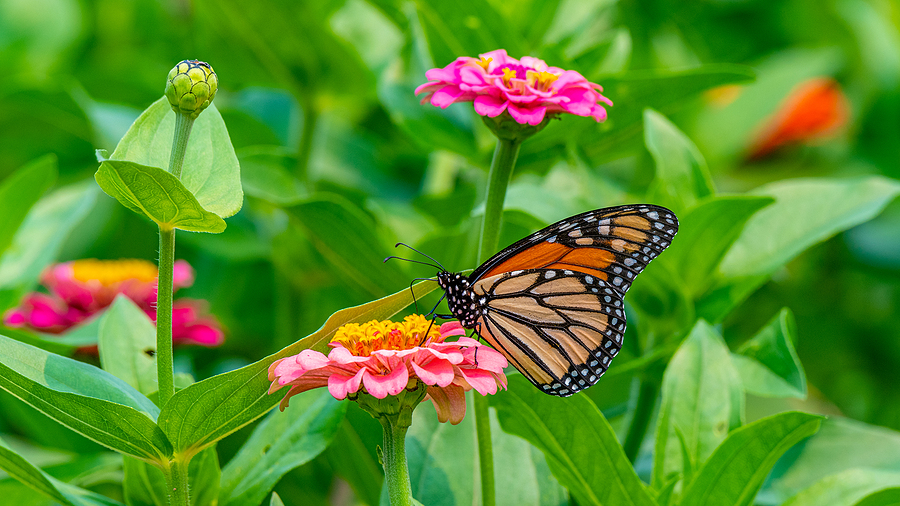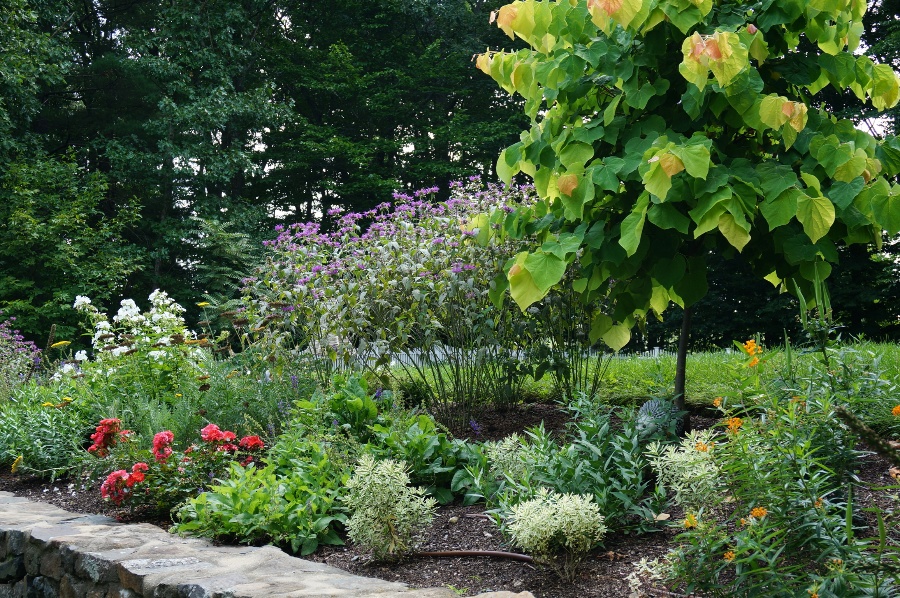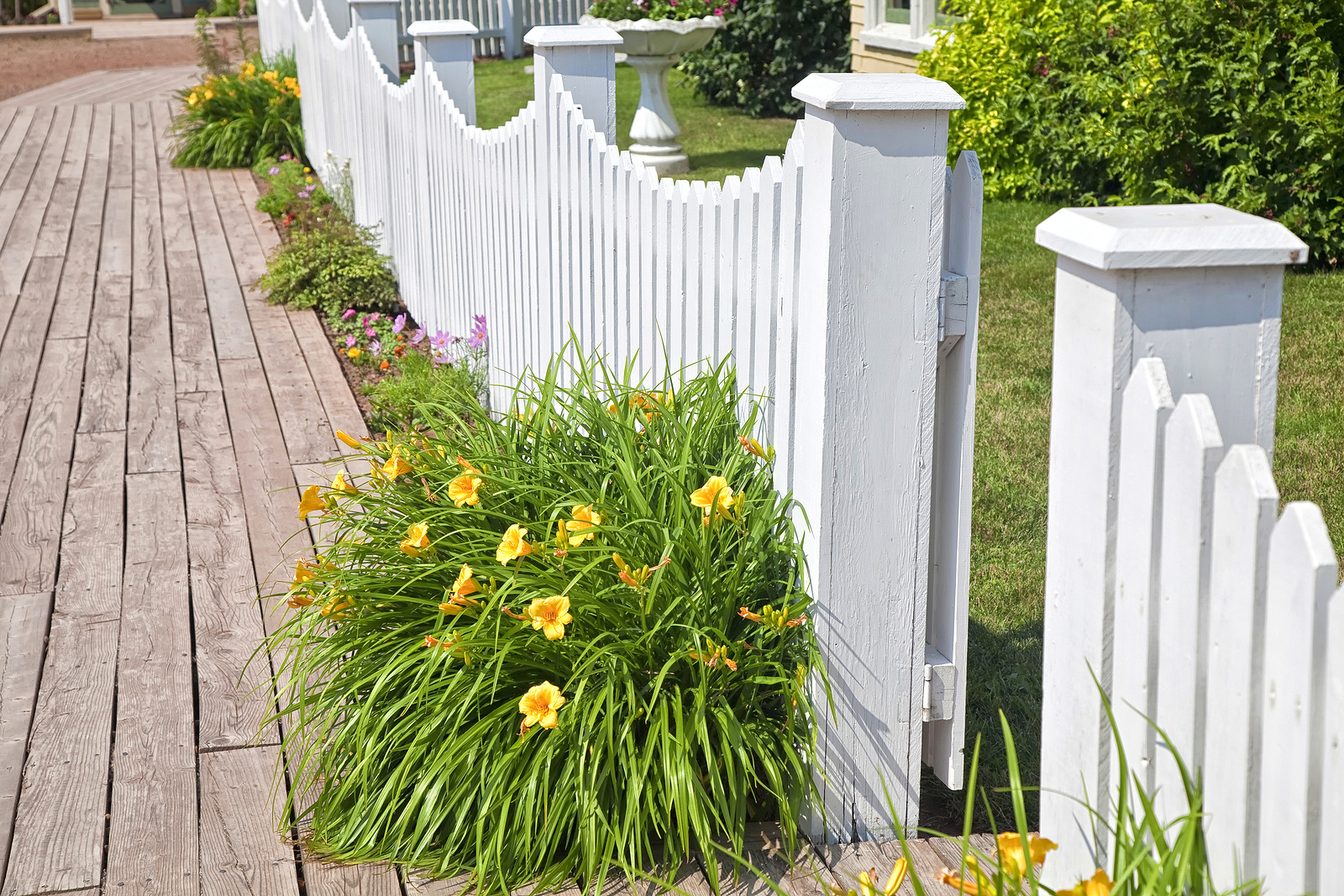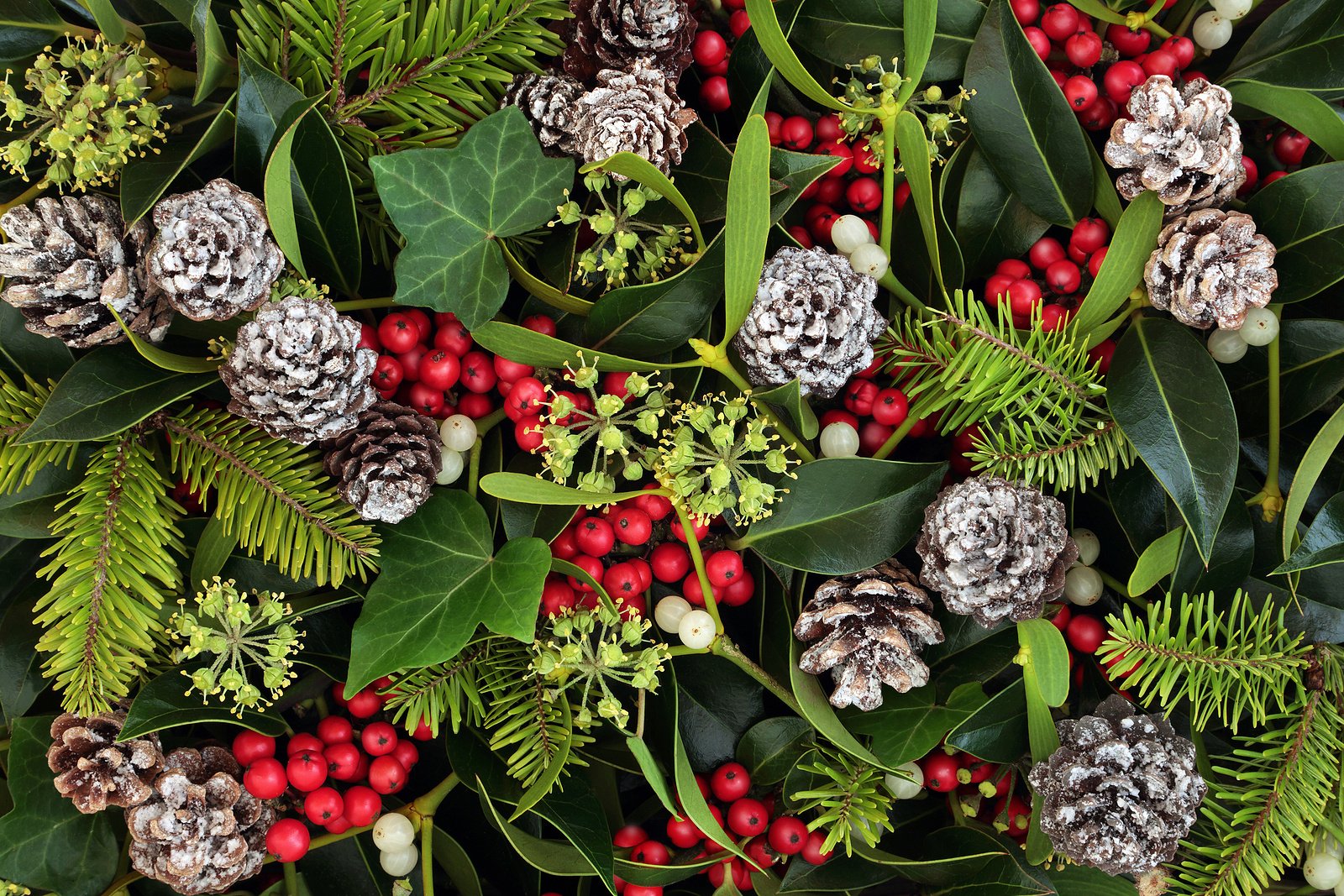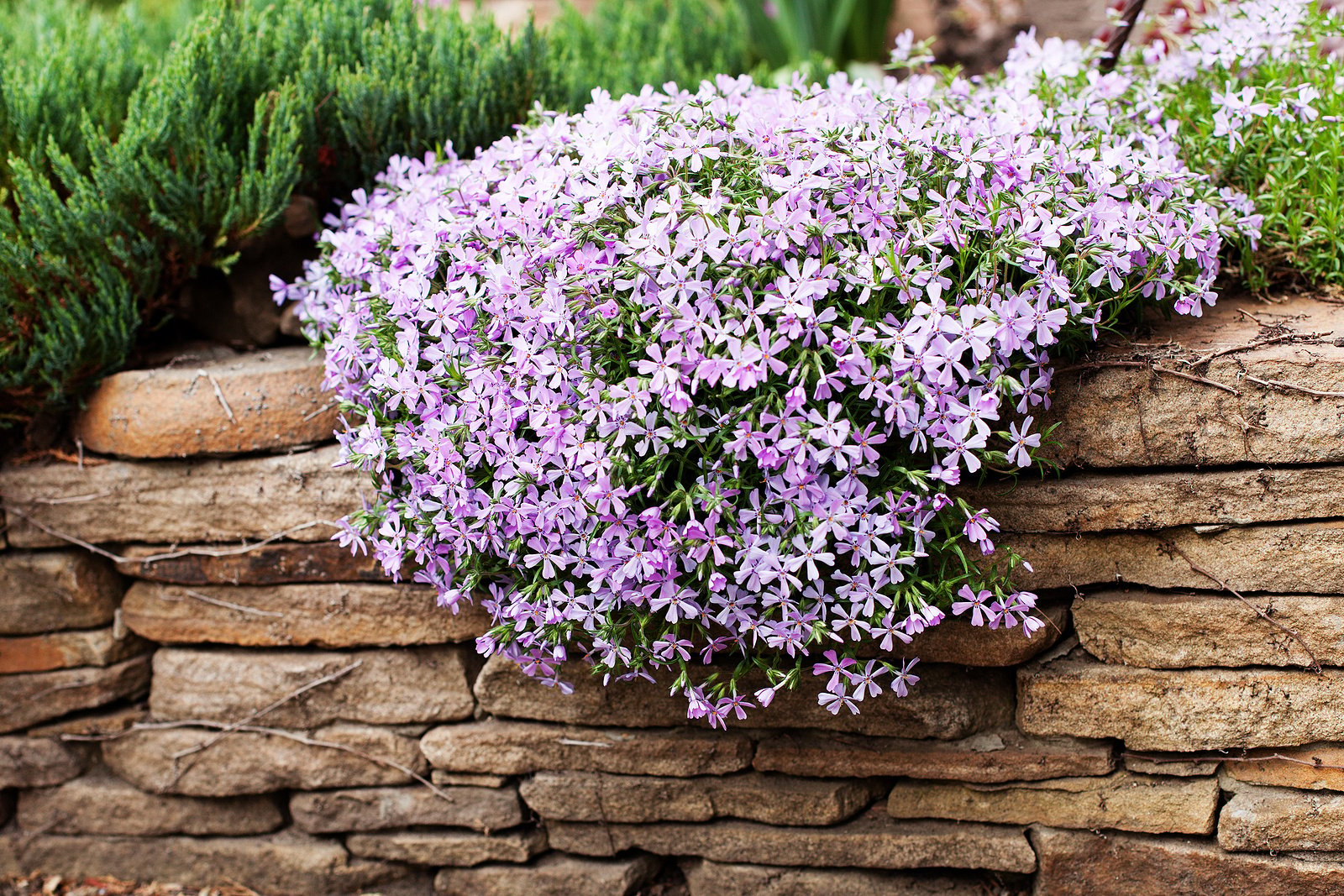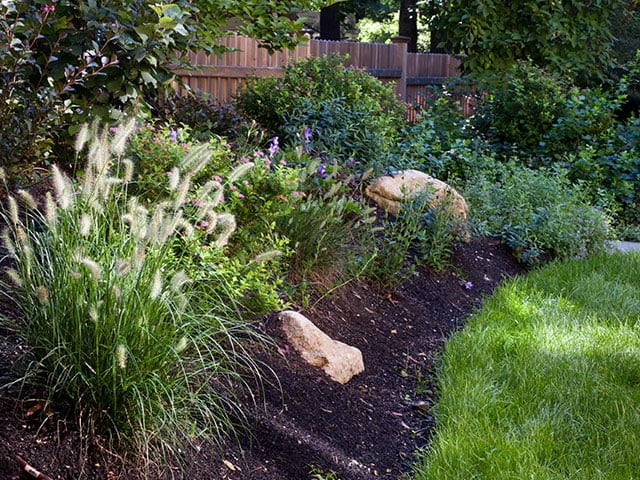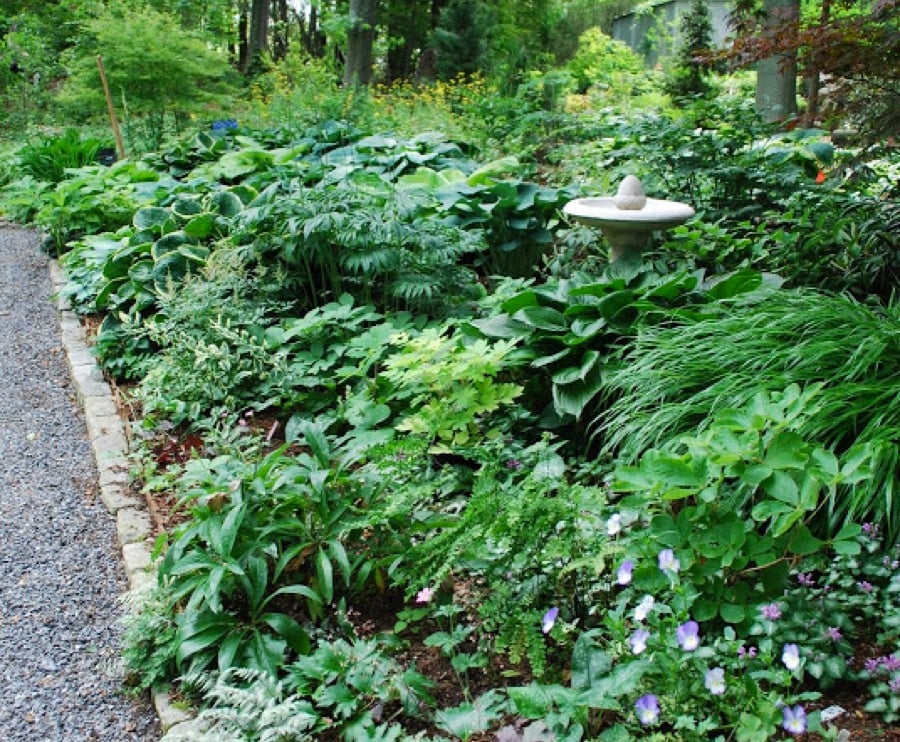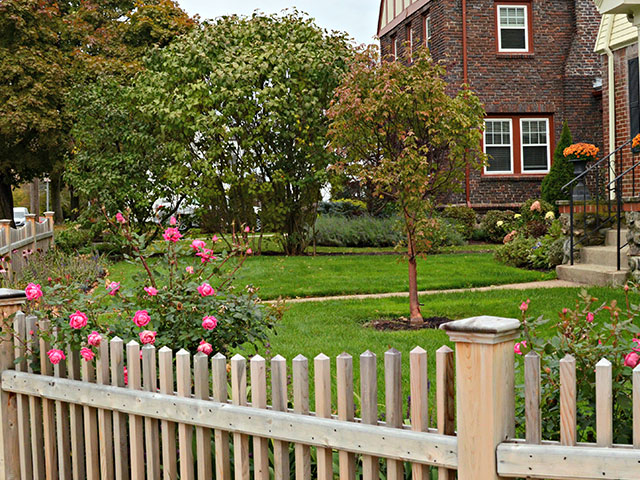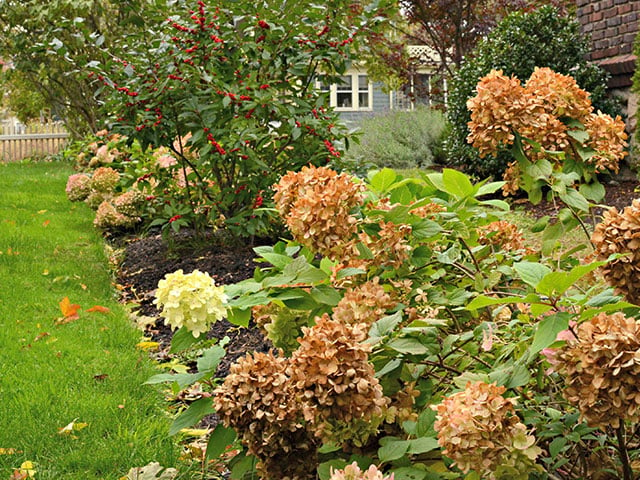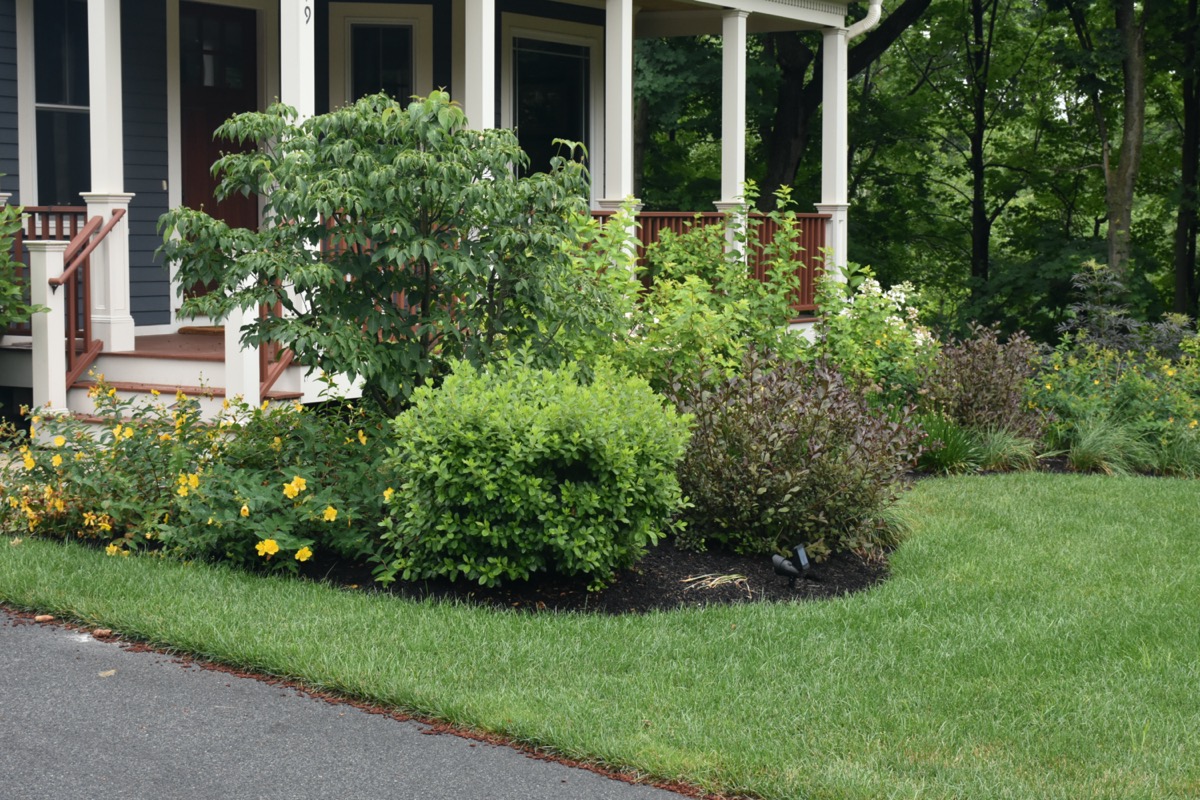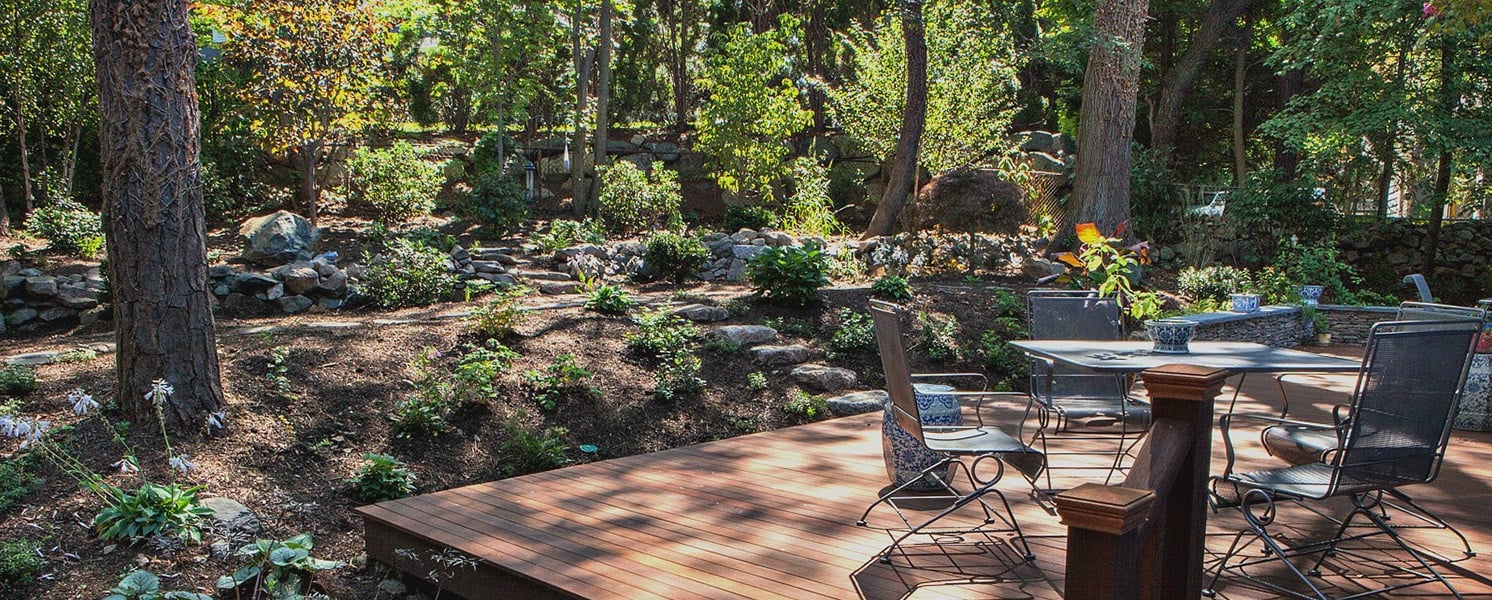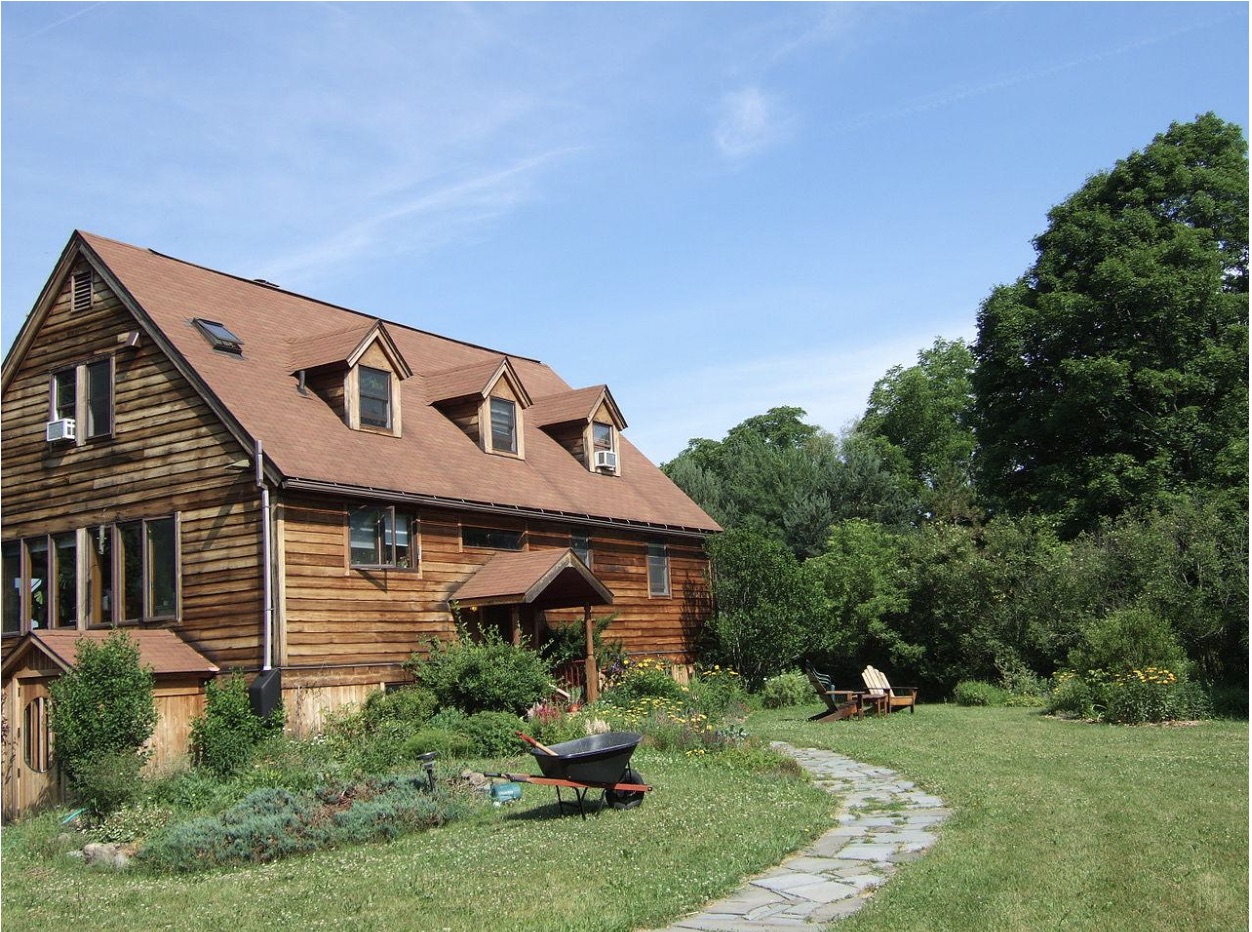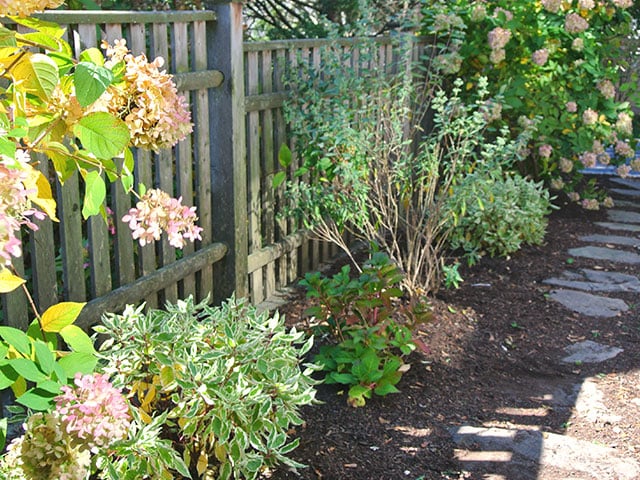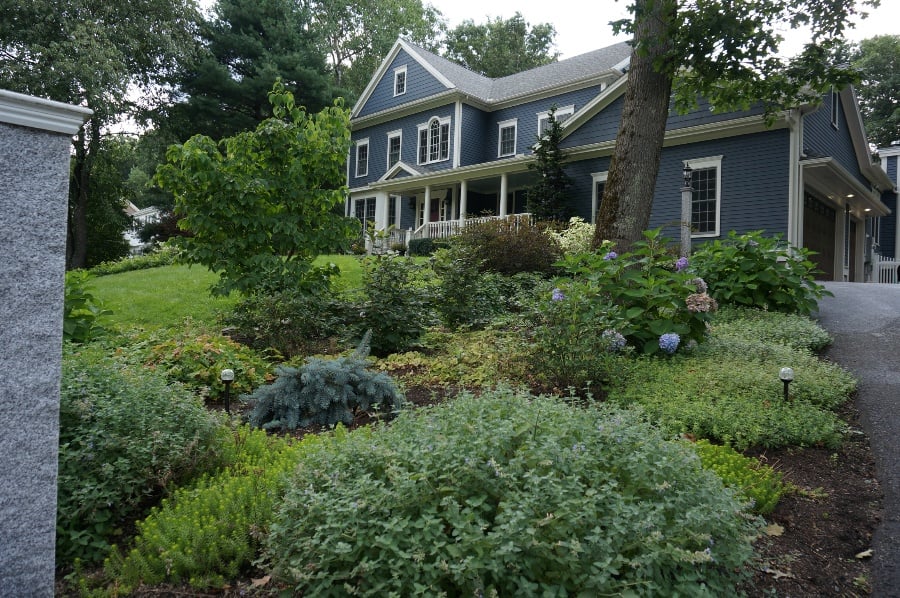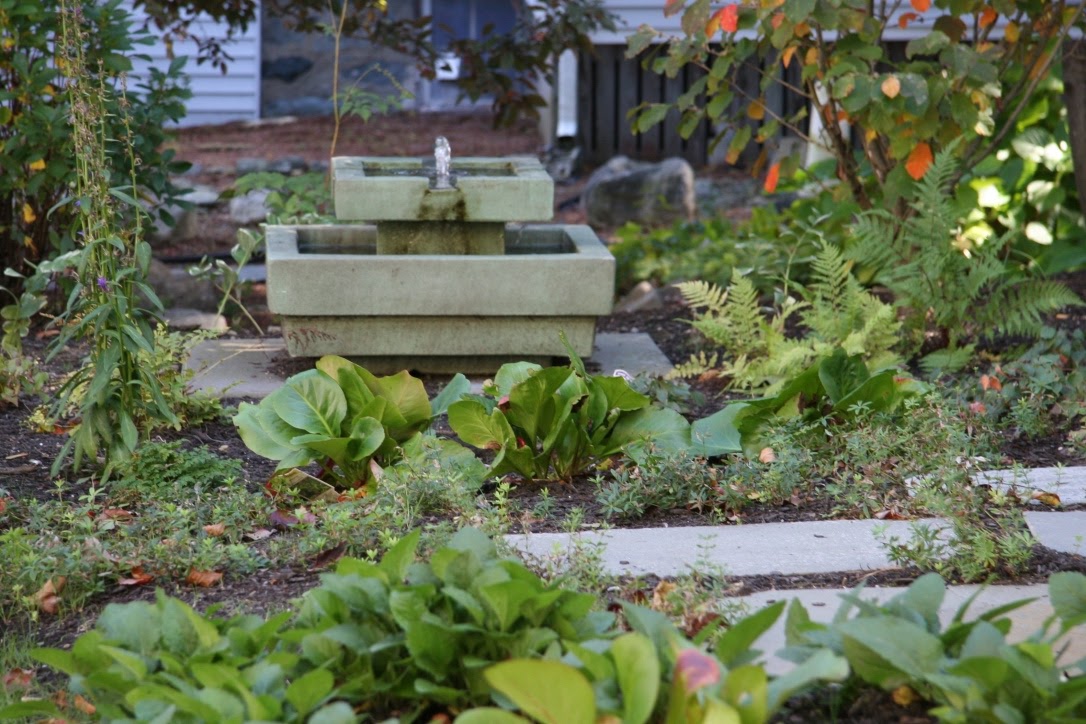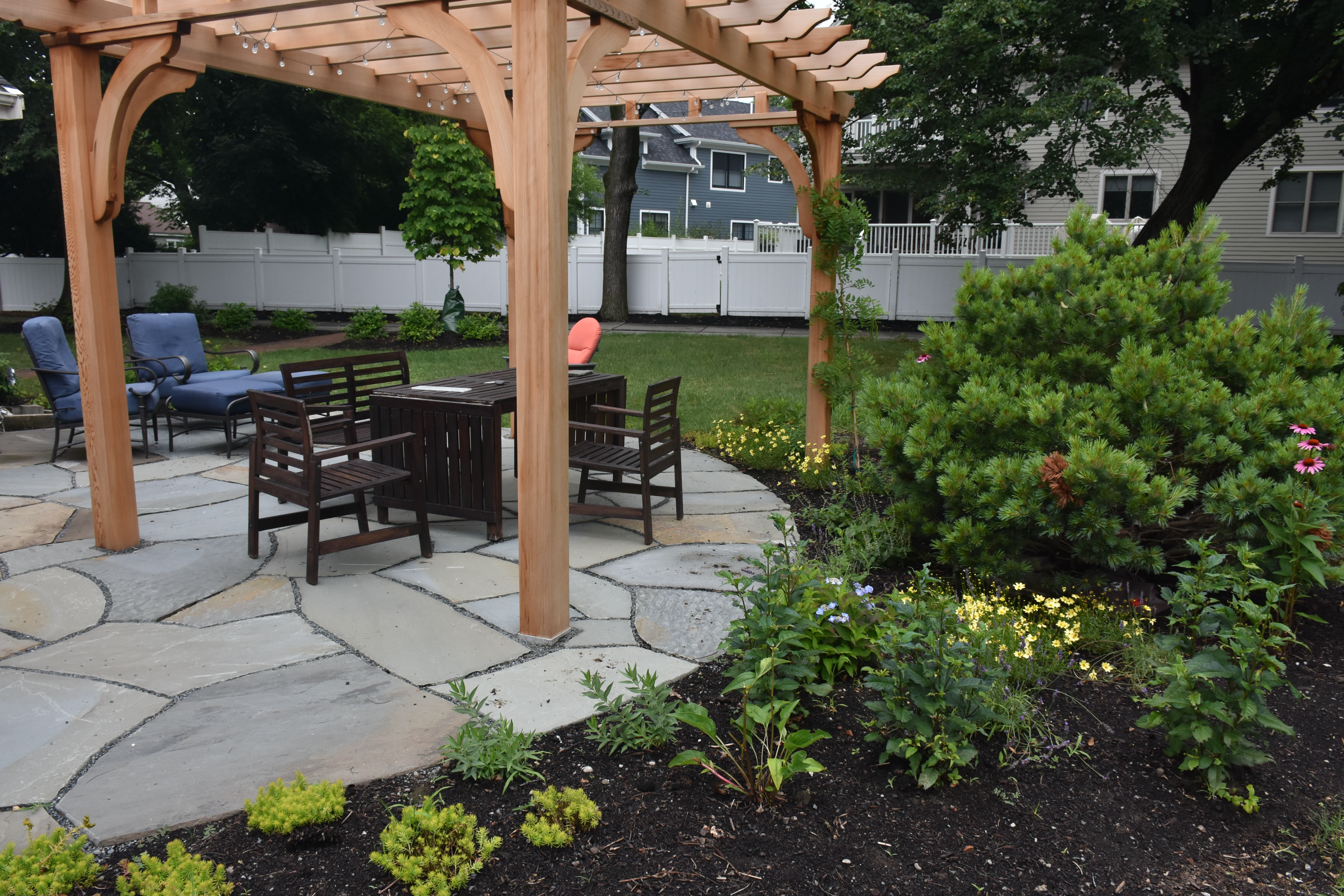If you’ve ever stood in front of a garden center wondering what plants actually look good together, you’re not alone. Creating a visually appealing border garden can feel like trying to match throw pillows without seeing the couch.
But with a little guidance and the right border plant pairings, you can create a beautiful garden design in your landscaping that turns heads all growing season long. Let’s dive into seven inspired border ideas that blend color, texture and form to give your outdoor space some real personality.
7 Creative Border Plant Combinations for Garden Borders
Russian Sage and Roses
- Type: Both perennials
- Bloom Times: Late spring to early fall (roses), midsummer to fall (Russian sage)
- Growth Habit: Upright, airy clumps
- Why It Works: The soft purple haze of Russian sage makes the perfect ethereal backdrop to bold, showy roses. Both thrive in full sun and are low-maintenance with regular deadheading. This combo adds elegance and movement to any flower bed or front yard border.

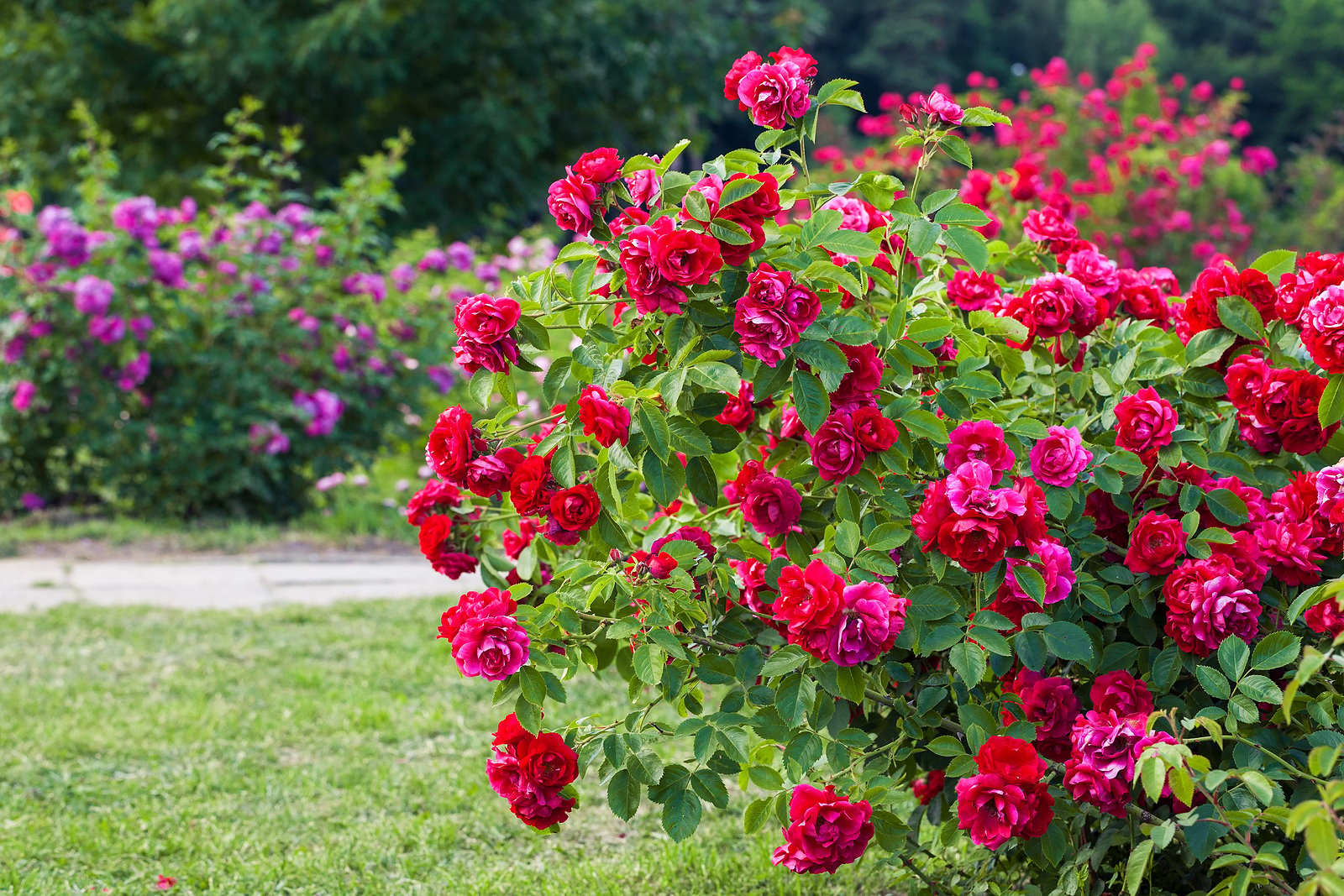
Hostas and Ferns
- Type: Both perennials
- Bloom Times: Summer (hostas), ferns provide structure all season
- Growth Habit: Low, spreading clumps (hosta), upright and feathery (ferns)
- Why It Works: Perfect for full shade spots under trees or along walkways, this duo offers texture-rich greenery all season. Variagated hostas pop against the feathery elegance of ferns, creating a serene woodland vibe with almost no effort.
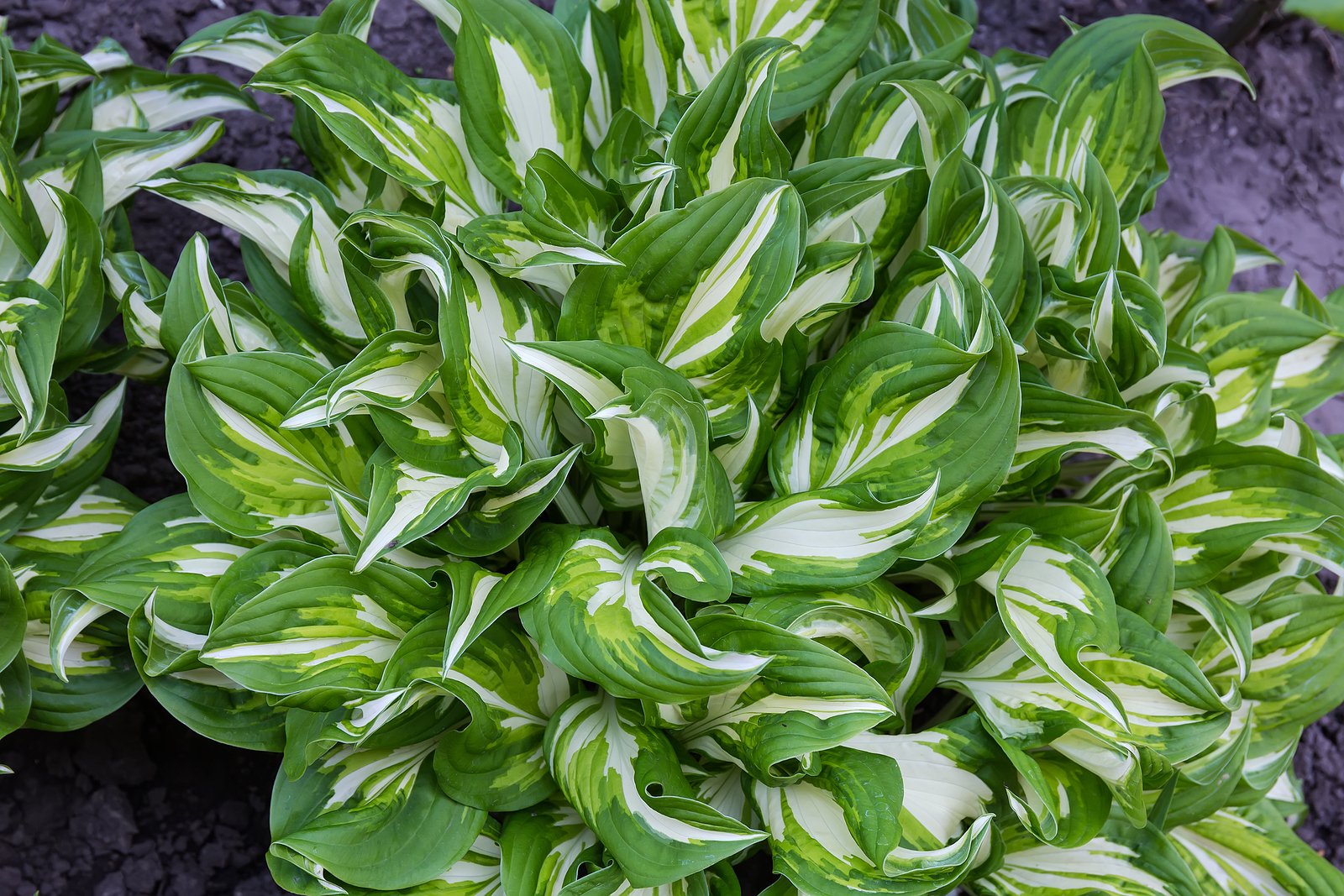

Lamb's Ear and Dianthus
- Type: Both perennials
- Bloom Times: Spring to early summer (dianthus), lamb’s ear has subtle summer flowers and year-round interest
- Growth Habit: Low-growing, spreading ground cover (lamb’s ear), compact and clumping (dianthus)
- Why It Works: Silvery lamb's ear provides a soft, fuzzy carpet that beautifully contrasts with the bold colors of dianthus blooms. This combo is ideal for edging plants in a border garden, especially in drier spots with full sun.
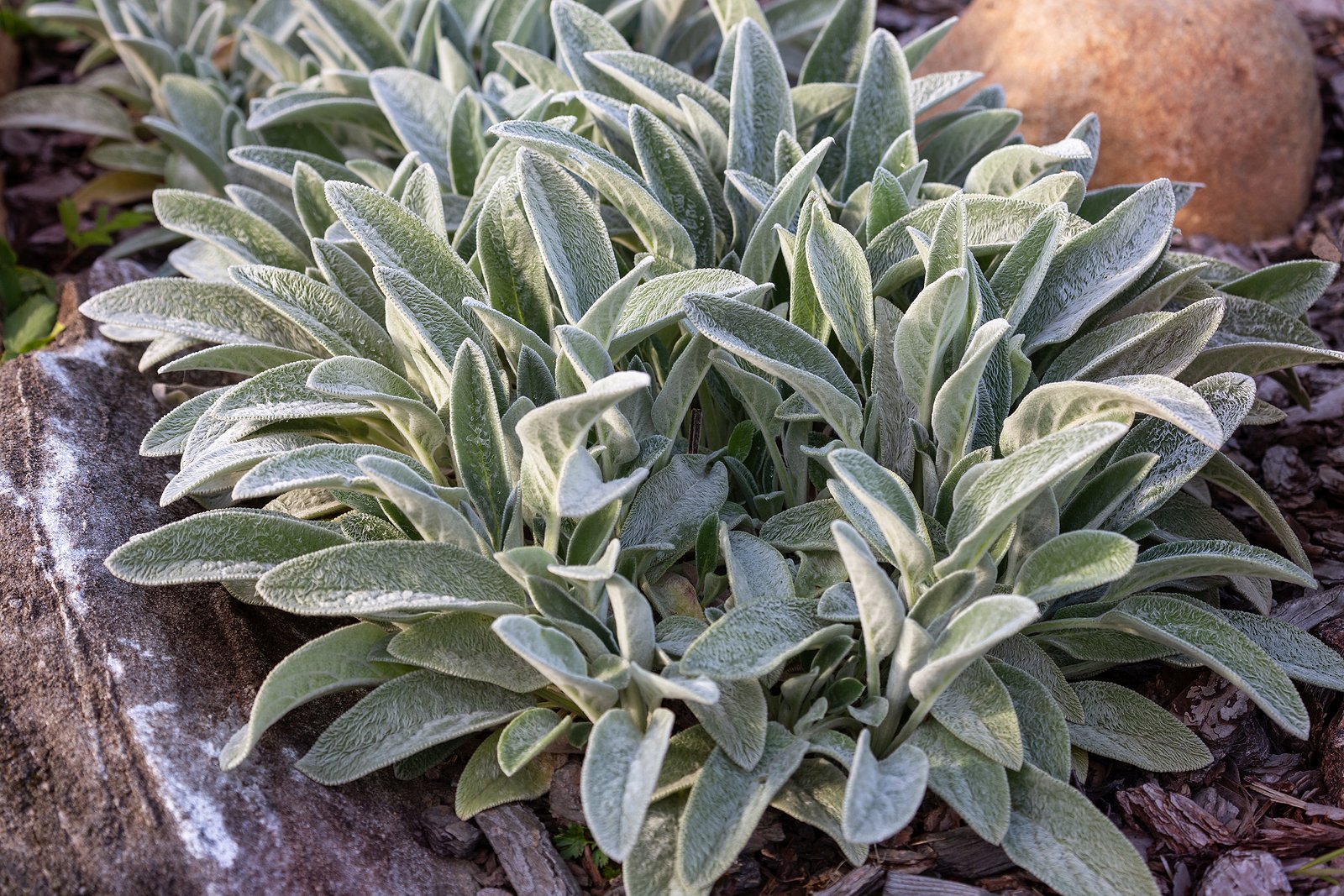
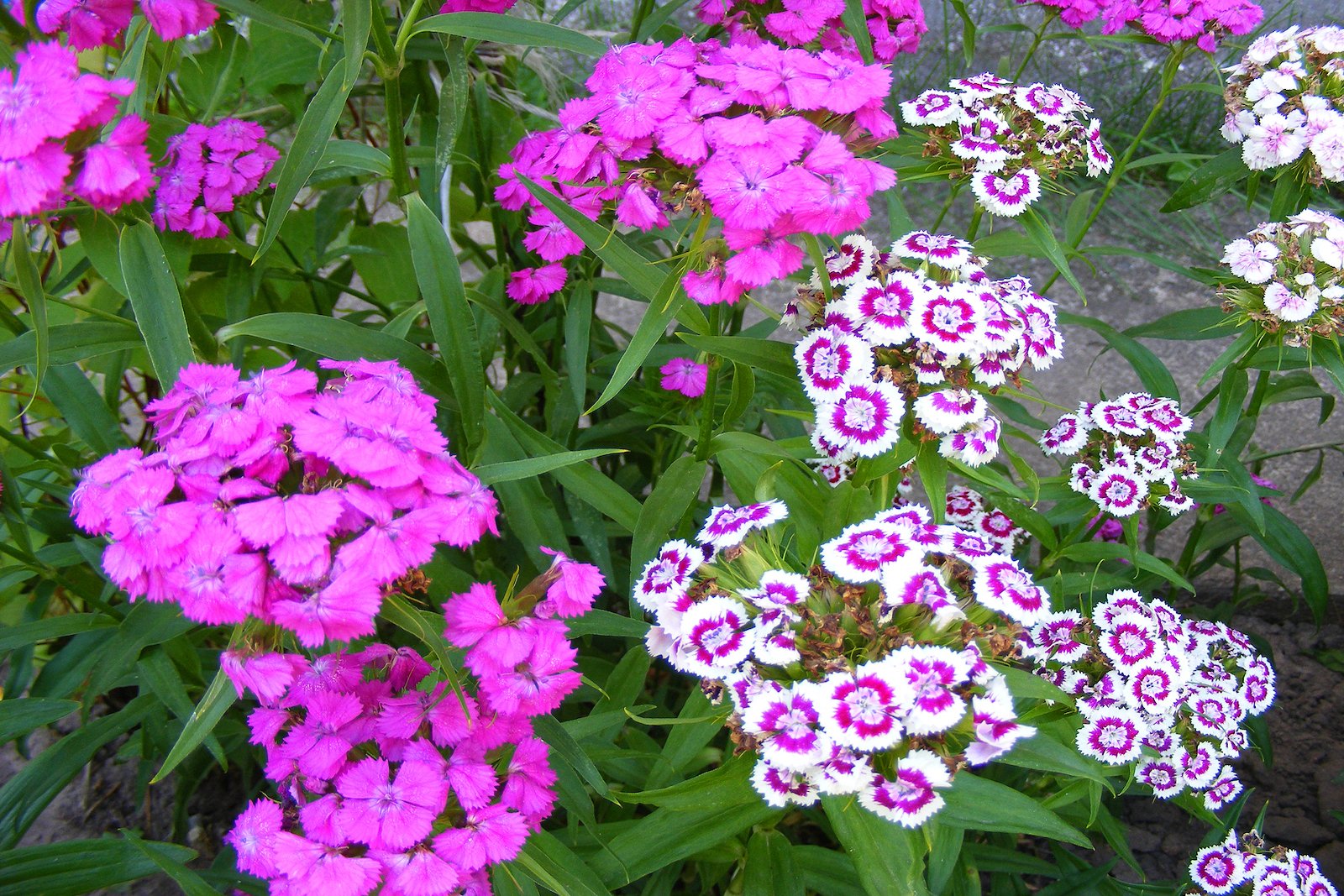
Coreopsis and Salvia
- Type: Both perennials
- Bloom Times: Early summer through fall
- Growth Habit: Low and mounding (coreopsis), upright spikes (salvia)
- Why It Works: These two bring non-stop color and attract pollinators like crazy. Plant them along the edge of a garden bed or lining a garden path. Both love full sun, are drought-tolerant, and need little more than a sunny spot and a little trim now and then.
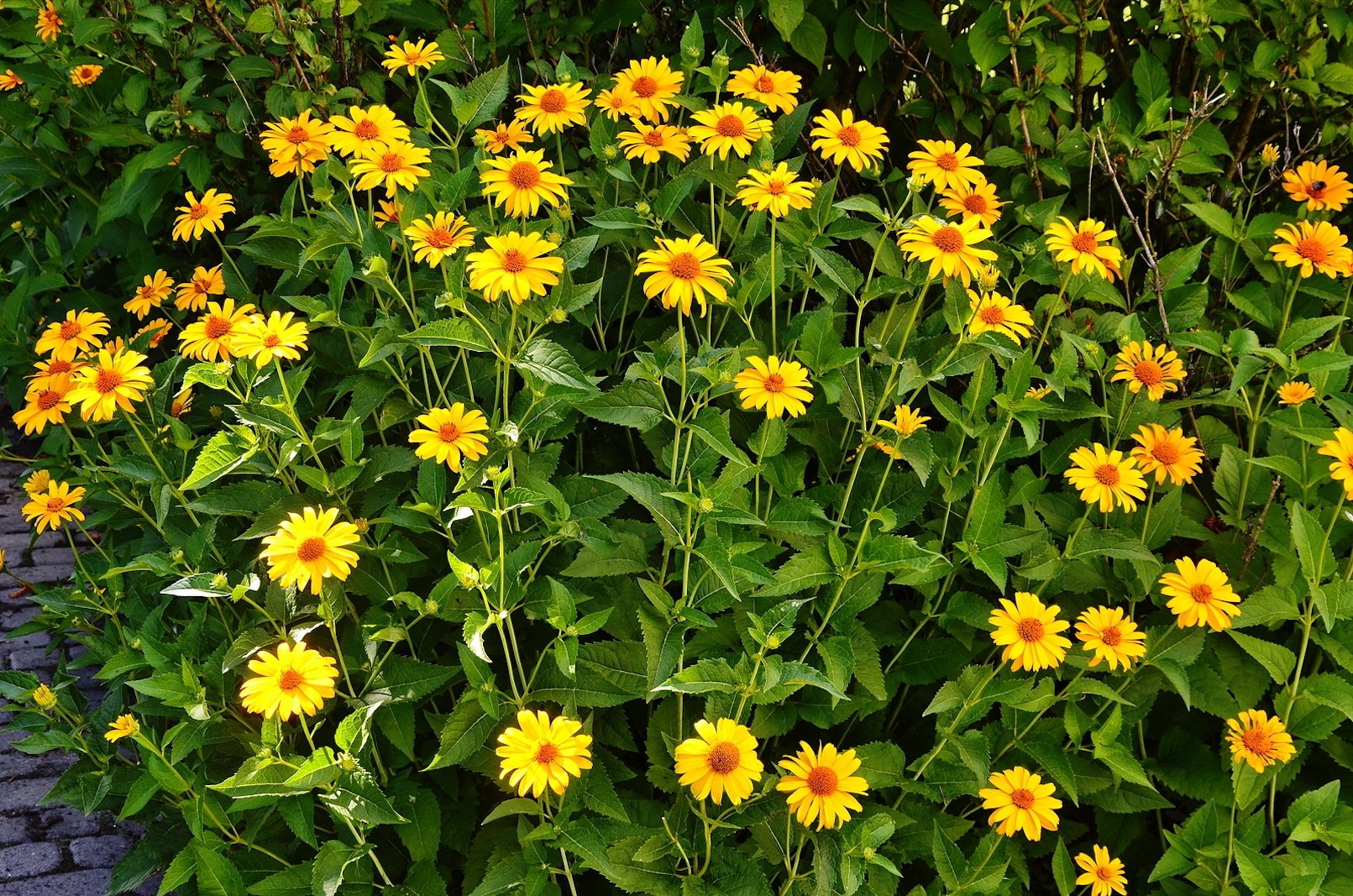
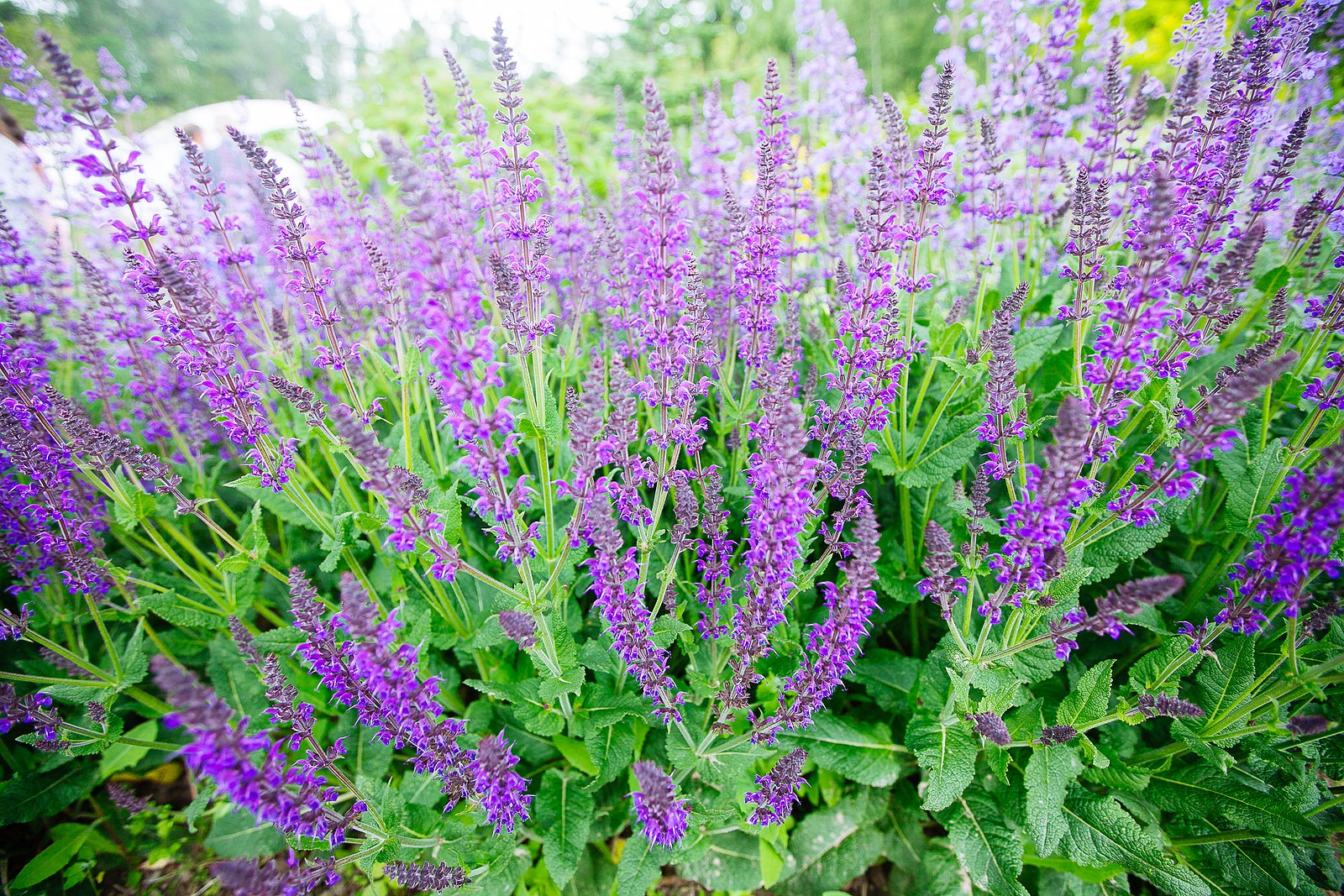
Phlox and Coneflower
- Type: Both perennials
- Bloom Times: Mid to late summer (phlox), early to late summer (coneflower)
- Growth Habit: Upright and bushy (phlox), tall with bold flower heads (coneflower)
- Why It Works: This combo brings vibrant, long-lasting color to full sun borders and attracts pollinators like butterflies and bees. Coneflowers offer bold vertical structure, while phlox fills in with clusters of color. Plus, they’re both drought-tolerant and low-maintenance.
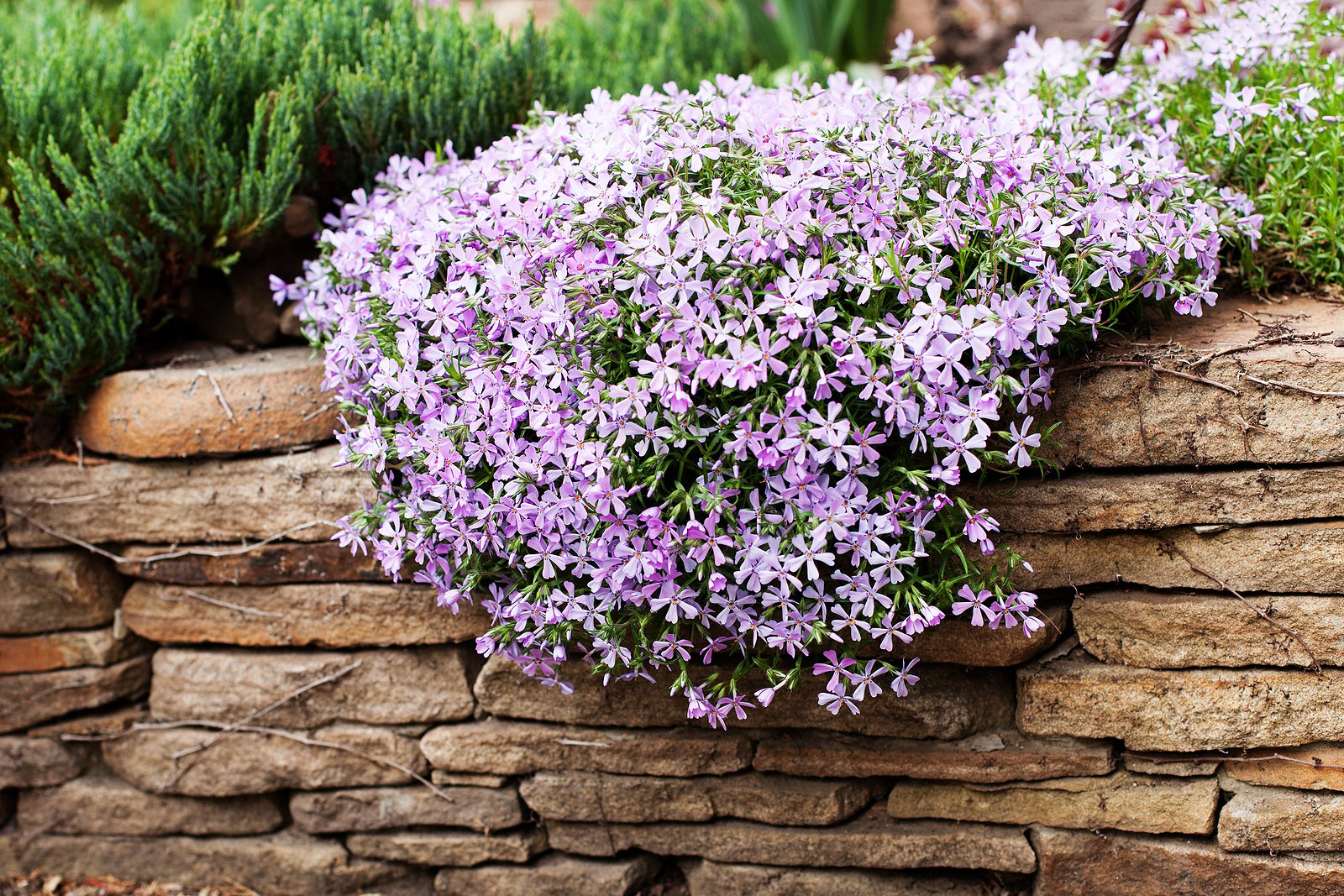
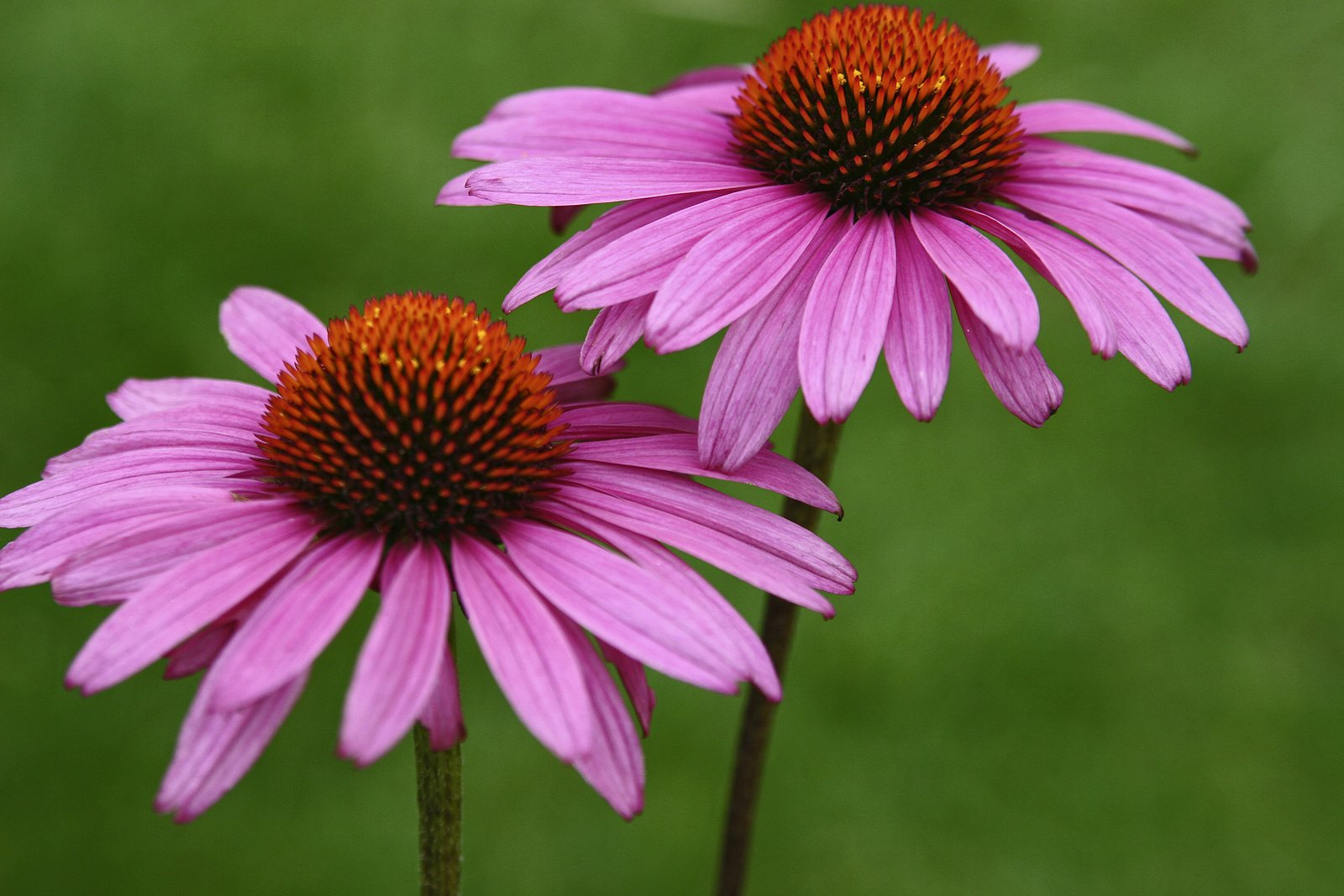
Catmint and Autumn Joy Sedum
- Type: Both perennials
- Bloom Times: Early summer (nepeta), late summer to fall (sedum)
- Growth Habit: Low and billowy (nepeta), upright and succulent (sedum)
- Why It Works: This pairing ensures your border plants stay lively across the seasons. Catmint fills the early season with lavender-blue color, while sedum carries the garden into fall with bold flower heads and succulent foliage. Together, they’re a pollinator magnet that’s tough and low-maintenance.
Hydrangeas and Fountain Grass
- Type: Hydrangeas are deciduous shrubs, fountain grass is a perennial ornamental grass
- Bloom Times: Summer to fall (hydrangeas), late summer to fall (fountain grass)
- Growth Habit: Large, bushy shrubs (hydrangeas), arching, graceful plumes (fountain grass)
- Why It Works: This combination brings a perfect blend of texture and color to your border garden. The lush hydrangea blooms (ranging from white flowers to pink or blue) create a full, vibrant backdrop, while the fountain grass adds movement with its airy, arching flower heads that catch the breeze. This pairing also provides year-round interest, as hydrangeas hold their dried blooms into the winter, and fountain grass offers lovely winter foliage.

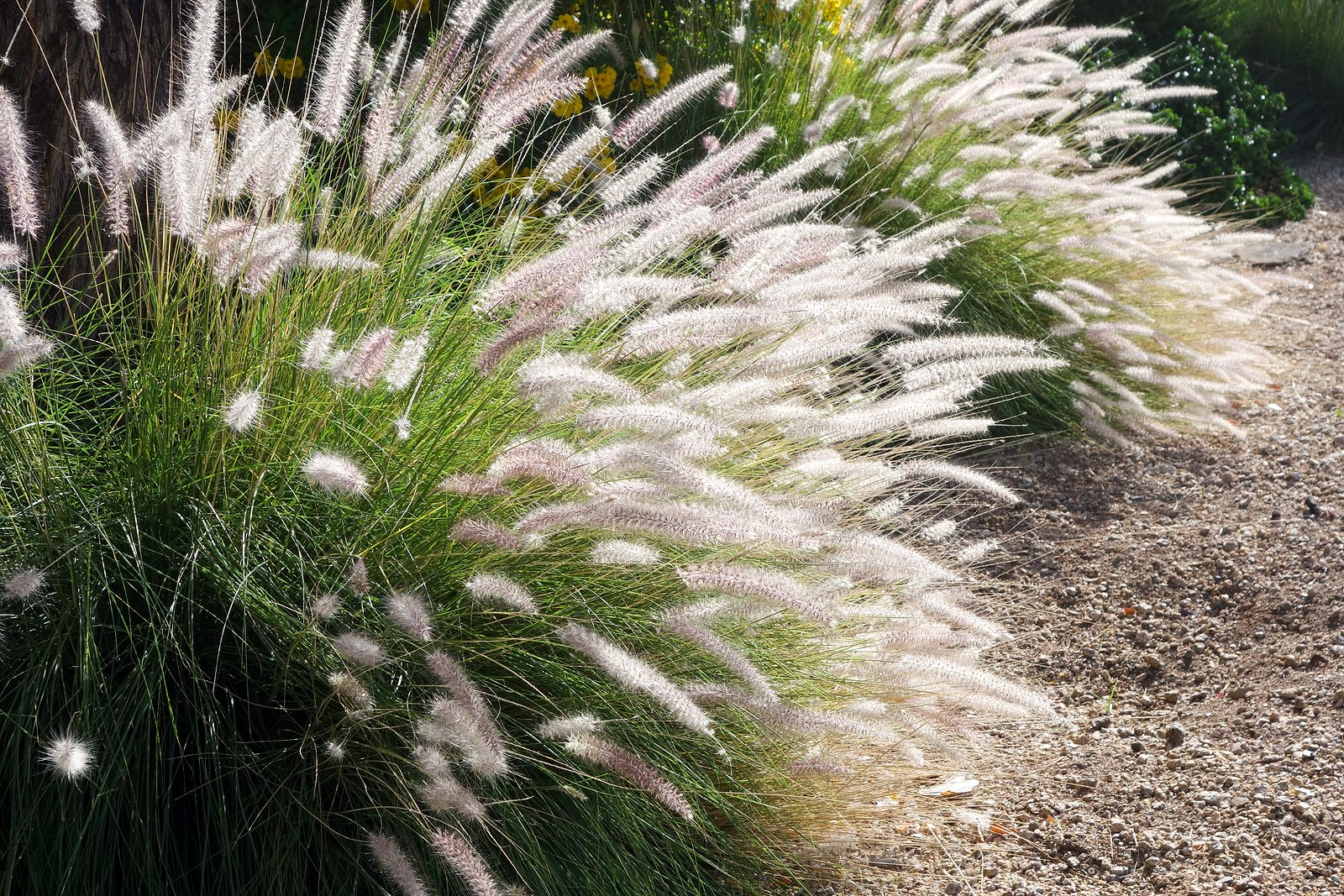
Building a garden you love doesn’t require a degree in horticulture. Sometimes, all it takes is pairing plants that naturally complement each other — visually and environmentally.
So whether you’ve got a shady walkway, a sunny front border, or a garden path that needs a little flair, try one of these pairings to bring your vision to life. With a few thoughtful choices, you’ll be on your way to a more dynamic, low-maintenance and beautiful garden beds — one blooming combo at a time.
To learn more about designing a custom landscape for your home, download our free ebook, The Mindful Homeowner's Guide to Transformative Landscape Design. If you're ready to get started on your new landscape project, or simply want to learn more about the process, you can contact our team here to schedule a free consultation. We'd love to talk to you!


